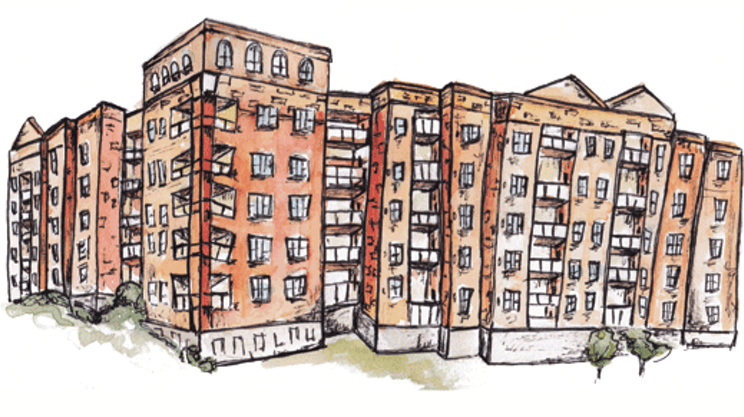W

A few years later, Comeau got sick again—this time landing in hospital. The restaurant where she worked at that time paid out vacation on each minimum-wage paycheque, and she still had no paid sick days. Time spent sick was time spent not earning, and she was coming up on bill time with only $20 in her bank account. She remembers thinking “Am I going to be able to get to work if I put gas in my car or use 10 bucks to get something to eat, am I going to be able to make it to payday?”
When COVID-19 arrived in Halifax in March of 2020, Comeau buckled up for the difficulties she was no stranger to. She had to stop working because of the first round of COVID restrictions, then she got altogether laid off and went on the CERB, before she got a job at a call centre—a job that “ended up destroying my mental health,” she says. Then she had to move to a new apartment that was double the rent of her previous place, got another job at a restaurant and had to stop working again because of the latest round of restrictions. So she joined the 83,450 Nova Scotians on EI and just this week filed her taxes—the CERB that saved her now crushing her with a $961 bill.
She has just $459.10 in her bank account. On Friday, $198 will come out for her car payment. Then she’ll have to pay for groceries and her phone bill. She’s still paying off her student loan from a single year of nursing school 20 years ago. That’ll have to come out of her account, too.
The turbulence of this past year meant tucking money away for tax time was out of the question. The mountain of maintenance itself was enough.
Comeau is 37 years old, and has been living paycheque to paycheque for most of her adult life. She’s among the 29 percent of Nova Scotians who earned up to $15 an hour in 2019.
“It’s infuriating,” she says about the moments she realizes she won’t be able to make ends meet. “It’s panic inducing, it’s the worst feeling in the world.”
This week’s announcement from the Nova Scotia government of four COVID-contingent paid sick days would have been the first sick days Comeau could ever access in her line of work. She says their belated arrival “feels like a slap in the face.”
According to the 2019 Statistics Canada Labour Force Survey Public Use File, the average hourly wage for accommodation and food services jobs in Nova Scotia was only $13.67. That’s three dollars below the Canadian average, and almost six dollars below the 2019 living wage for Halifax. The same numbers tell us that almost half—45 percent— of Nova Scotians were earning less than Halifax’s $19.17 living wage at that time. Almost one in two Haligonians was making tough decisions, screening phone calls to avoid creditors they have no money to pay and navigating life under a constant grey sky of scarcity.
Ninety-four percent of Nova Scotia’s accommodation and food service workers earned less than the living wage in 2019. Ninety-four percent! Life for that 94 percent looks a lot like Comeau’s.
“Imagine your life where you don't know if you'll be able to put food on the table the next day because you're not sure if you'll get continuous hours or regular hours,” says Casey. When you’re living paycheque to paycheque, there’s this “kind of constant fear for a lot of low-wage workers, the fear of not knowing.”
When Comeau is sick, her very first thought is money. “Can I afford to not pay this particular bill, or is there a way that I can wiggle money around and not pay all of this bill and catch up next month?” she asks herself. “Or do I just go and hope I can get through the shift?”
In the press release announcing the province’s new paid sick days program, premier Iain Rankin was quoted saying paid sick leave means people “won't have to make a difficult decision between their health and the health of others, or their own financial well-being."
That difficult decision has been Comeau’s reality for 20 years. The 29 percent of Nova Scotia’s workforce earning up to $15 an hour in 2019 have made that decision countless times.
Today, Halifax’s living wage is set at $21.80. The data on how many Nova Scotians are earning less than $43,600 a year isn’t available yet. But rising rents, only a temporary promise of rent control and job turmoil across low-wage sectors gives little hope that it’ll be any less than 45 percent of the workforce.












